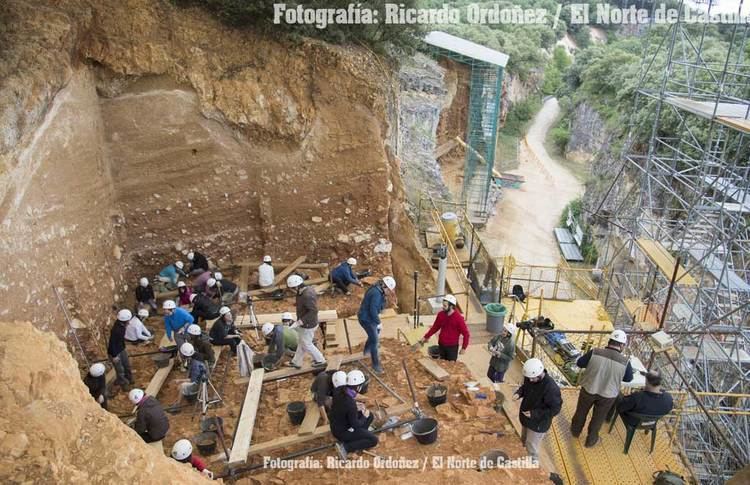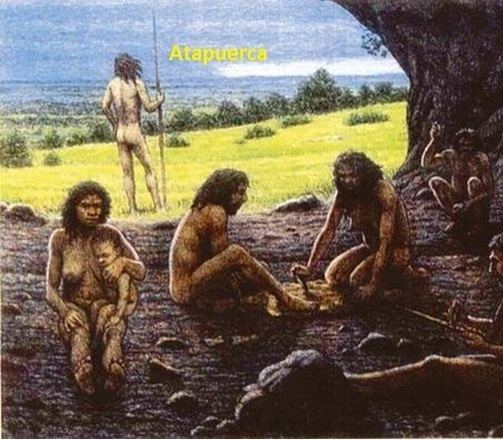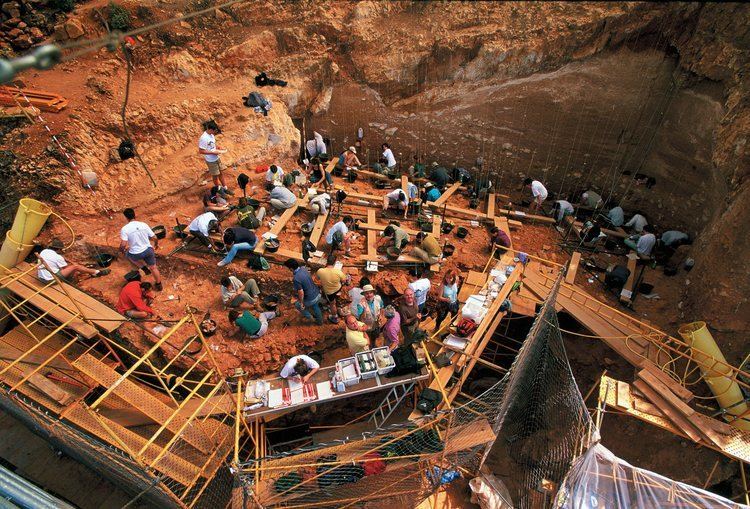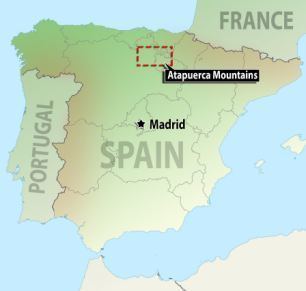Archaeologists Francisco Jordá Cerdá | Excavation dates since 1964 | |
 | ||
Similar Museum of Human Evolution, Cave of Altamira, Burgos Cathedral, Museo de Burgos, Las Médulas | ||
Atapuerca mountains
The Atapuerca Mountains, (Spanish: Sierra de Atapuerca) is a karstic hill formation near Atapuerca town in Castile and Leon, northern Spain. In a still ongoing excavation campaign rich fossil deposits and stone tool assemblages were discovered in the complex of local caves that are attributed to the earliest known hominin residents in Western Europe. This "exceptional reserve of data" has been deposited during extensive Lower Paleolithic presence as the Atapuerca Mountains served as the preferred occupation site of Homo erectus, Homo antecessor (or Homo erectus antecessor) and Homo heidelbergensis communities. The earliest specimen yet unearthed and reliably dated confirm an age between 1.2 Million and 600,000 years. The site was induced into the UNESCO list of World Heritage Sites under the designation Archeological Site of Atapuerca.
Contents
- Atapuerca mountains
- Regional geography
- Archaeological site
- Portaln 1910 to present
- Galera de la Eduarda y el Kolora 1972
- Galera 1978 to present
- Trinchera Dolina 1981 to present
- Sima de los Huesos 1983 to present
- Sima del Elefante 1996 to present
- Cueva del Mirador 1999 to present
- Orchids Valley 2000 to 2001 and Hundidero 2004 to 2005
- Hotel California 2006
- Recorded history
- References

Atapuerca mountains
Regional geography

Encompassing 284,119 ha (702,070 acres) the Atapuerca Mountains are a mid-altitude karstic range of small foothills around 1,080 m (3,540 ft) above sea level at the north-east corner of the Douro basin and to the south of the Cantabrian Mountains that run across northern Spain. Stretching alongside the Bureba corridor, a mountain pass that connects the Ebro river valley with the Mediterranean Sea and the Duero basin. This conjunction constitutes an ecotone, that is rich in species of both ecosystems. The mountain pass was part of an Roman causeway and the pilgrimage route of Saint James that is now traversed by the N-I and AP-1 highways. Situated strategically in between two major drainage divides and near the mountain pass is assumed to have been supportive for the successful and prolonged hominid habitation.
Archaeological site

The archaeological significance of the area became increasingly apparent during the construction of a railway line as deep trenches were cut through the rocks and sediments of the Gran Dolina site, the Galería Elefante and at Sima de los Huesos. The subsequent excavation of 1964 under the direction of Francisco Jordá Cerdá succeeded with the discovery of anthropogenic artifacts and human fossils from a broad time range of early humans, hunter-gatherer groups to Bronze Age occupants and modern human settlers. Further campaigns expanded and interdisciplinary work has been undertaken by several teams, led by Emiliano Aguirre from 1978 to 1990 and later jointly by Eudald Carbonell, José María Bermúdez de Castro and Juan Luis Arsuaga.

The government of Castile and León has designated the site an Espacio cultural and under the title Zona Arqueológica sierra de Atapuerca the site is protected under Spanish law as it was induced into the Bien de Interés Cultural heritage register.
Portalón (1910 to present)

The combined work of archaeologists Jesús Carballo (1910 to 1911), Geoffrey Clark (1971), José María Apellániz (1973 to 1983) and the current team of Juan Luis Arsuaga account for the documentation of the excavation sequence of ceramic objects from all relevant sediment layers since the Neolithic.
Galería de la Eduarda y el Kolora (1972)
The Galería de la Eduarda y el Kolora is a local cave that contains parietal rock paintings, only discovered in 1972 by a group of local speleologists.
Galería (1978 to present)
Among numerous faunal and floral fossils a jaw fragment was found during the 1970s and a skull fragment in 1995, which both belong to Homo heidelbergensis. They date to between 600,000 and 400,000 years BP.
Trinchera Dolina (1981 to present)
The Gran Dolina (also Trinchera Dolina, En: Dolina trench) site is a huge cavern, which is being excavated since September 1981. Its sediments were divided into eleven stratae (TD-1 to TD-11)
Sima de los Huesos (1983 to present)
Sima de los Huesos (Pit of Bones) accounts for the greatest number of valuable scientific discoveries and knowledge acquired with far-reaching implications. This site is located at the bottom of a 13 m (43 ft) deep shaft, or "chimney" accessible via the narrow corridors of the Cueva Mayor.
Since 1997 the excavators have located more than 5,500 human skeletal remains deposited during the Middle Pleistocene period, at least 350,000 years old, which represent 28 individuals of Homo heidelbergensis. Associated finds include Ursus deningeri fossils and a hand axe called Excalibur. Having received a surprisingly high degree of attention a number of experts support the hypothesis that this particular Acheulean tool made of red quartzite implies to have served as a ritual offering, most likely for a funeral. The idea sparked a renewal of the disputed evolutionary progress and the stages of human cognitive, intellectual and conceptual development. Ninety percent of the known Homo heidelbergensis fossil record have been obtained at the site. The fossil bone pit includes:
Some excavators have stated that the concentration of bones in the pit allows the suggestion of a traditional burial culture among the cave's inhabitants. A competing theory cites the lack of small bones in the assemblage and suggests that the fossils were washed into the pit by non-human agents.
Sima del Elefante (1996 to present)
According to José María Bermúdez de Castro, co-director of research at Atapuerca, the Sima del Elefante findings support "anatomical evidence of the hominids that fabricated tools more than one million years ago", which may have been the earliest among Western European hominids. The first discovery in June 2007 was a tooth followed by a fragment of a jawbone and a proximal phalanx in 2008.
Cueva del Mirador (1999 to present)
This site provides information on earliest local farmers and herders of the late Neolithic and Bronze Age.
Orchids Valley (2000 to 2001) and Hundidero (2004 to 2005)
Stone tools of the Upper Paleolithic have been extracted from this locality.
Hotel California (2006)
An open-air settlement.
Recorded history
Piedrahita ("standing stone") in the Atapuerca valley is according to records site of the Battle of Atapuerca, which took place in 1054 between the forces of Ferdinand I of Castile and his brother García V of Navarre.
